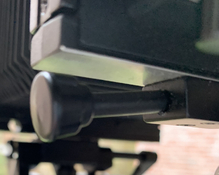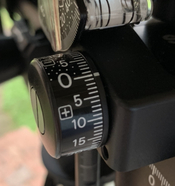@John Patrick Garriga While I'd say Drew is technically correct in what he writes, it's worth noting that he has a long history here of advising that any other than wavelength-level precision and perfection is unacceptable. I'd rephrase what he said above about sloppiness to mean that unless every single part of your equipment and process is perfect (and it isn't), you won't be able to tell diffraction from defocus at f/45 on a 150 mm lens (with 4x5 negatives, anyway).
If you follow Drew's advice, you might well give up before you actually expose and process any film.
Find out for yourself -- shoot the same scene at f/22, f/32, f/45, and f/64 (if your lens will stop down that far -- many won't even in large format focal lengths). Examine the resulting negatives with a loupe. Learn the difference between defocus and diffraction (hint: one is local and depending on distance to subject, the other is not). Then make your own decisions.
And of course, don't do your early learning at $40 a sheet for 8x10 chromes...







